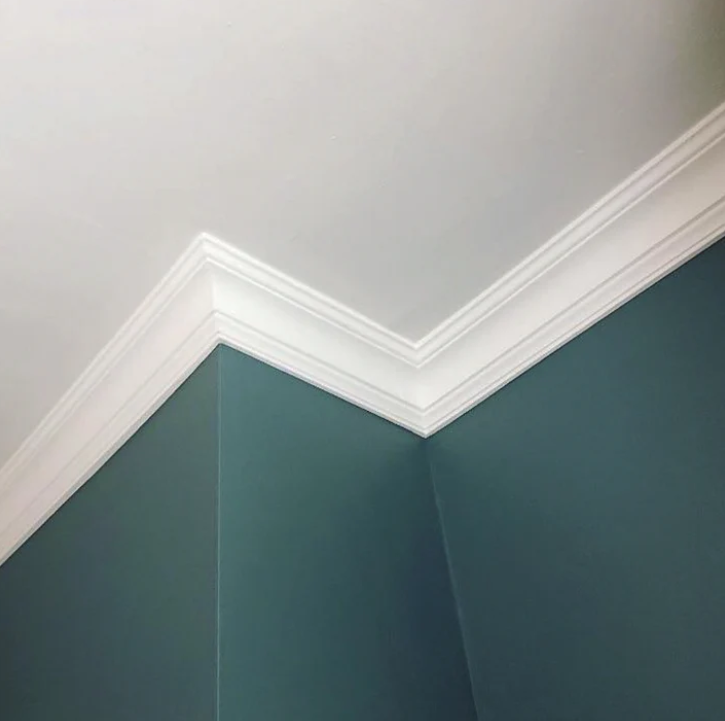
Coving, once a staple of classical and Victorian interior design, is making a notable comeback in contemporary homes, particularly in London. This elegant architectural detail, traditionally used to create a smooth transition between walls and ceilings, is re-emerging as a stylish choice for modern interiors.
Here’s why London coving is experiencing a revival and how it’s becoming a favorite among homeowners and designers alike.
The resurgence of coving in London interiors reflects a broader trend towards embracing traditional aesthetics. As homeowners and designers seek to infuse their spaces with historical charm, coving offers an elegant link to the past. The intricate designs and craftsmanship associated with coving evoke a sense of nostalgia and sophistication that many find appealing.
While traditional coving features elaborate patterns and ornate details, modern interpretations offer a fresh take. Contemporary coving designs often incorporate cleaner lines and minimalist aesthetics, making them suitable for a wide range of interior styles. This blend of historical charm with modern sensibilities ensures that coving can enhance both period properties and modern homes.
London Coving plays a crucial role in creating a seamless transition between walls and ceilings. In contemporary interiors, this smooth transition adds a polished finish and a sense of refinement. The absence of harsh lines or corners helps to soften the overall look of a room, making it feel more cohesive and well-designed.
In modern interiors, coving is often used to accentuate other architectural features such as ceiling roses, chandeliers, or recessed lighting. By framing these elements, coving draws attention to them and enhances their visual impact. This ability to highlight key features makes coving a versatile tool in interior design.
Flat walls and ceilings can sometimes feel uninteresting or monotonous. Coving adds visual interest by introducing curves and patterns that break up these flat surfaces. This added dimension creates a more dynamic and engaging space, transforming a simple room into a visually captivating environment.
The three-dimensional nature of coving allows it to create natural shadows and highlights. This play of light and shadow adds depth and texture to a room, contributing to a warm and inviting atmosphere. The subtle variations in lighting enhance the room’s ambiance and bring attention to the details of the coving itself.
One of the reasons for coving’s resurgence is its versatility. Coving can complement a wide range of interior styles, from traditional and classic to modern and minimalist. Whether used in period properties or contemporary spaces, coving adds a touch of elegance and sophistication without overpowering the overall design.
Modern coving designs offer a range of customization options. Homeowners and designers can choose from different sizes, patterns, and materials to suit their specific tastes and needs. Additionally, coving can be painted in any color, allowing it to seamlessly integrate with existing color schemes or stand out as a striking feature.
Incorporating coving into a home can enhance its appeal and sophistication. The presence of coving is often associated with quality and attention to detail, traits that can make a property more attractive to potential buyers. As a result, coving can contribute to increased property value and marketability.
Coving’s timeless design ensures that it remains stylish and relevant even as interior design trends change. Its classic appeal means that it won’t quickly go out of fashion, making it a long-term investment for homeowners looking to add enduring beauty to their spaces.
Coving is not only decorative but also practical. It can help conceal imperfections where the wall meets the ceiling, such as cracks, uneven plaster, or gaps. This ability to cover up minor flaws contributes to a more polished and flawless finish in the room.
In addition to its aesthetic benefits, coving can help protect walls from damage. It acts as a buffer, preventing scuffs and marks caused by furniture or everyday wear and tear. This protective function helps maintain the condition of the walls and ensures that the room continues to look its best.
Modern coving is designed for ease of installation. Pre-molded pieces can be cut to size and installed using adhesive, making the process straightforward and accessible for DIY enthusiasts. For those seeking a more polished finish, professional installation is also available.
Once installed, coving requires minimal maintenance. Regular dusting and occasional touch-up painting are usually sufficient to keep it looking its best. The durability of modern coving materials ensures that it remains in excellent condition over time, providing lasting beauty with minimal effort.
The current trend towards personalization and customization in interior design has contributed to the resurgence of coving. Homeowners and designers are increasingly seeking unique and tailored elements that reflect their individual styles. Coving offers a customizable solution that can be adapted to suit specific design preferences and needs.
Modern coving designs often integrate with contemporary technology, such as recessed lighting and smart home systems. This integration allows coving to be both functional and aesthetically pleasing, enhancing its appeal in today’s technologically advanced interiors.
The comeback of London coving reflects a growing appreciation for traditional elegance and craftsmanship in modern interiors. Its ability to enhance architectural features, add visual interest, and complement a range of design styles makes it a versatile and attractive choice.
With its historical charm, practical benefits, and customization options, coving is proving to be a timeless design element that resonates with contemporary homeowners and designers alike. Embrace the revival of coving and enjoy the sophisticated touch it brings to your home, blending the best of historical aesthetics with modern sensibilities.